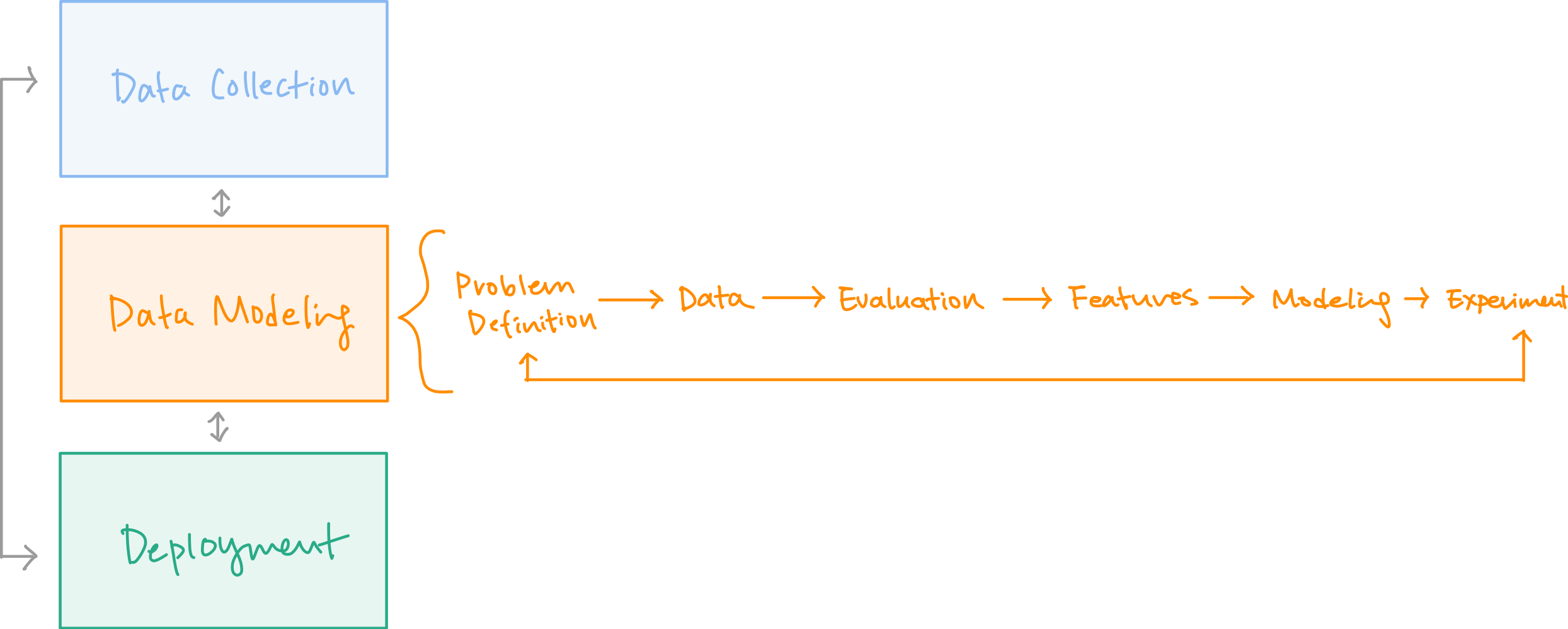Come back to this lesson when you feel lost or overwhelmed!
Machine Learning Framework

1) Problem definition: What are we trying to solve?
- Align the problem with a machine learning problem
- Remember: not all problems need a machine learning solution
- Types of machine learning
- Supervised learning
- Classification
- Regression
- Unsupervised learning
- Clustering
- Transfer learning
- Uses past ML and builds on it
- Reinforcement learning (out of the scope of this course)
- Uses reward and punishment to learn
- Supervised learning
2) Data: What kind of dat do we have?
- Types
- Structured: Excel, CSV
- Unstructured: Photos, images, audio, emails, etc.
- Static: Data that doesn’t change over time
- Streaming: Data that changes over time
3) Evaluation: What does success mean to us?
- Important because you can keep “improving” the model but you need a tangible end goal that you can measure your success against
- Different types of metrics
- Classification: Accuracy, precision, recall
- Regression: Mean absolute error (MAE), mean squared error (MSE), root mean squared error (RMSE)
- Recommendation: Precision at K
4) Features: What do we already know about the data?
- Examples of data features: weight, heart rate, chest pain
- Types of features
- Numerical
- Categorical
- Derived
- It’s important that MOST of your data has the feature for it to be useful
5) Modeling: Based on our problem and data, what model should we use?
3 sets
- Split your data into three different sets:
- training set (70%-80%)
- validation set (10%-15%)
- testing set (10%-15%)
Choosing and training a model
- Know how to choose the appropriate model for the data
- Goal: minimize time between experiments
- Don’t be afraid to try things but start small and add complexity as you go
Tuning a model
- Usually done on the validation set
- Goal: improve the results to match our end goal
- Remember that it can take time
Comparing models
- How will out model perform in the real world?
- Watch out for under-fitting and over-fitting
- Make sure you’re comparing apples to apples
- You use the same training set
- What’s the “cost” of increased accuracy